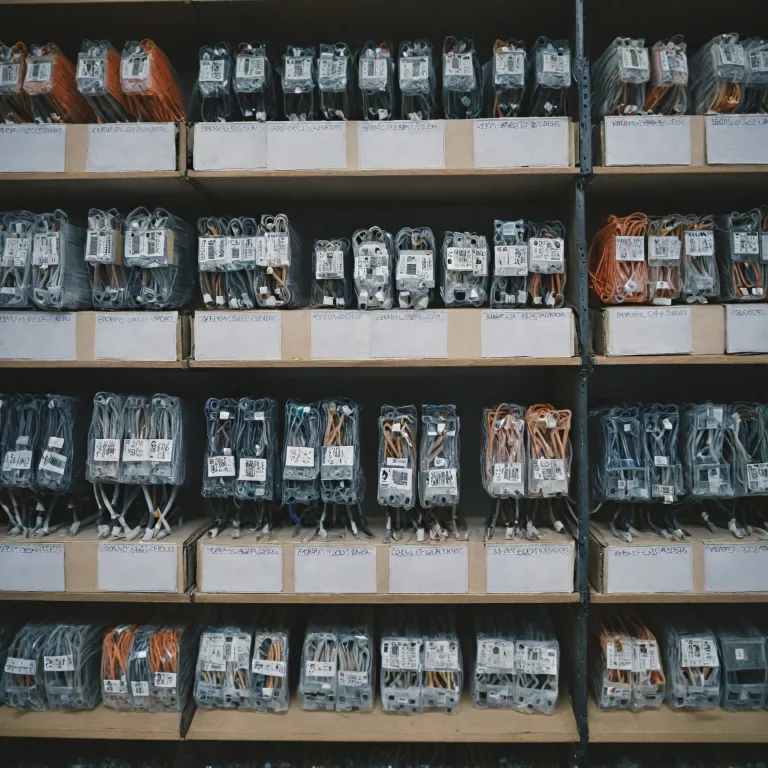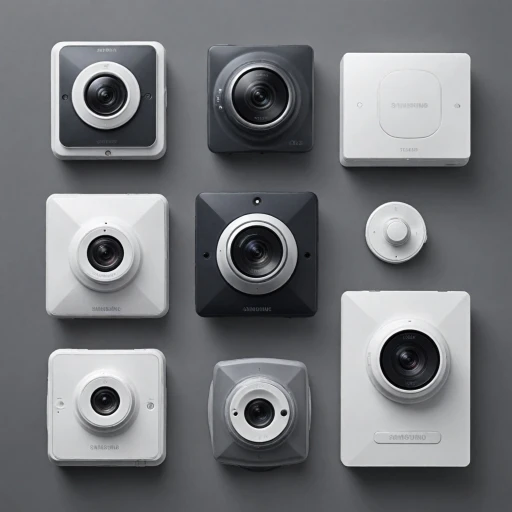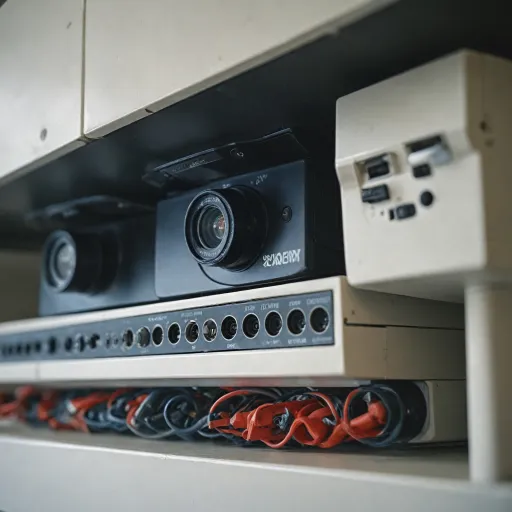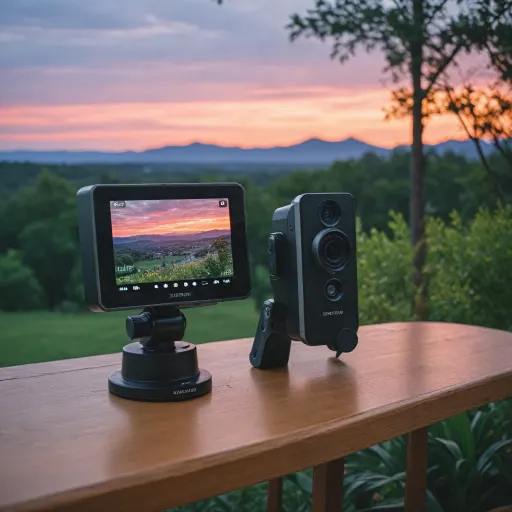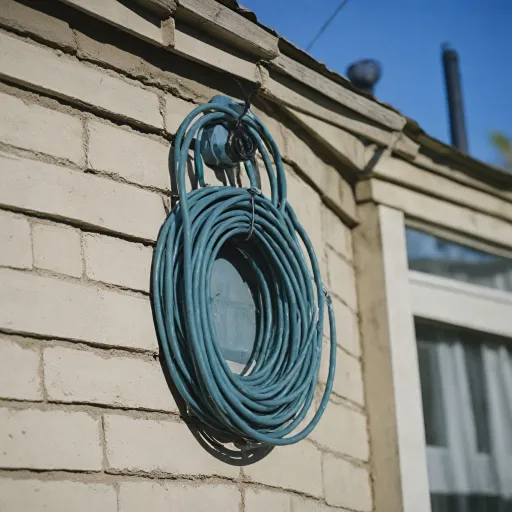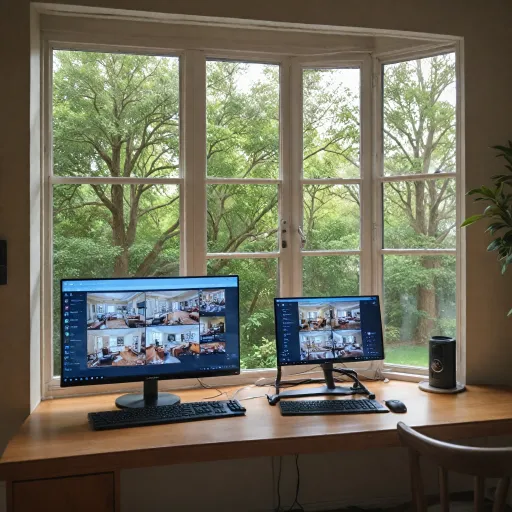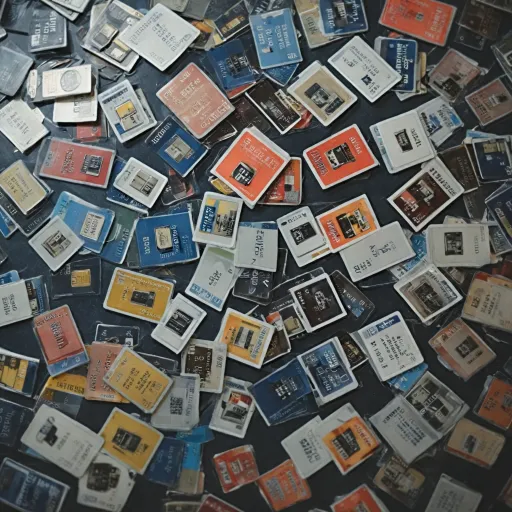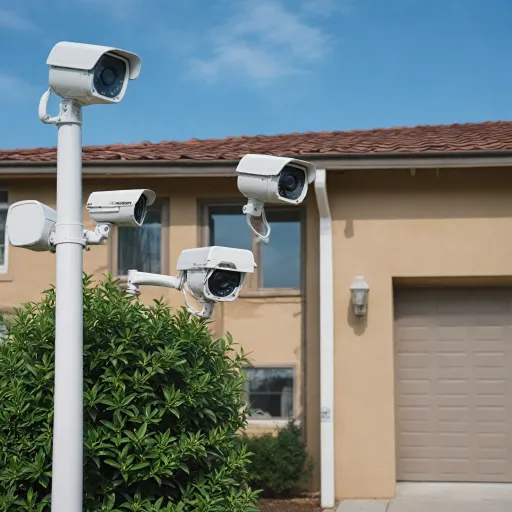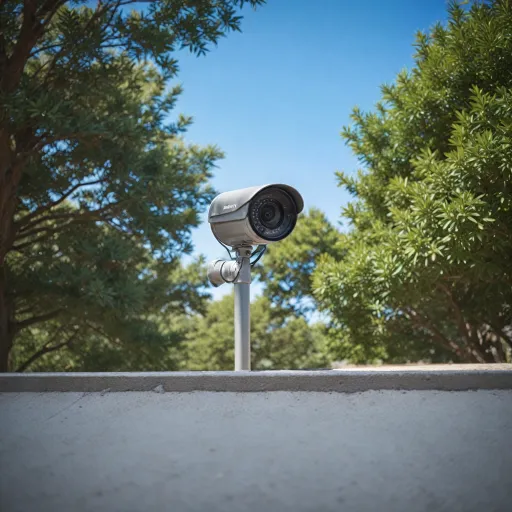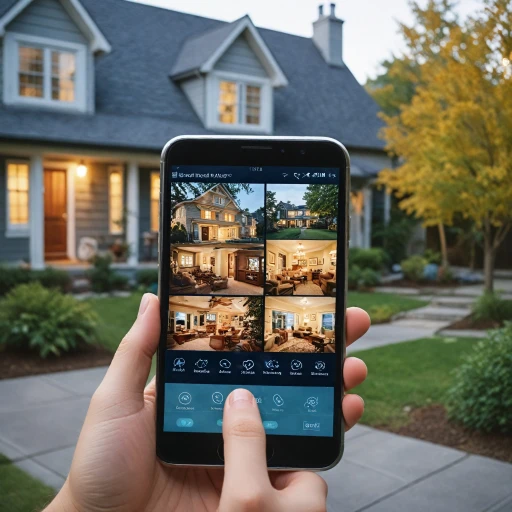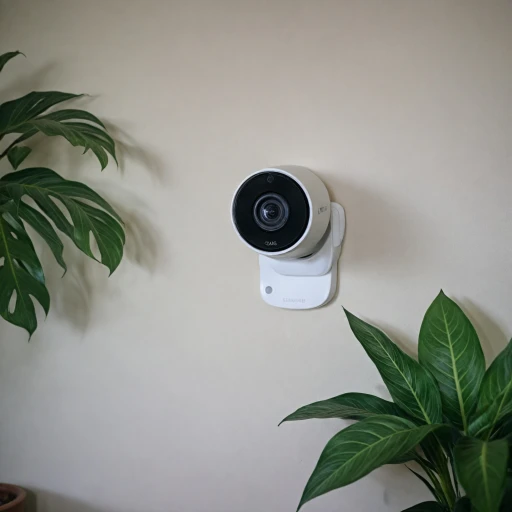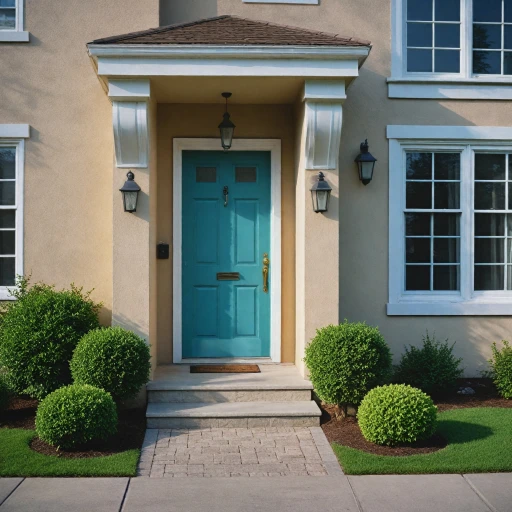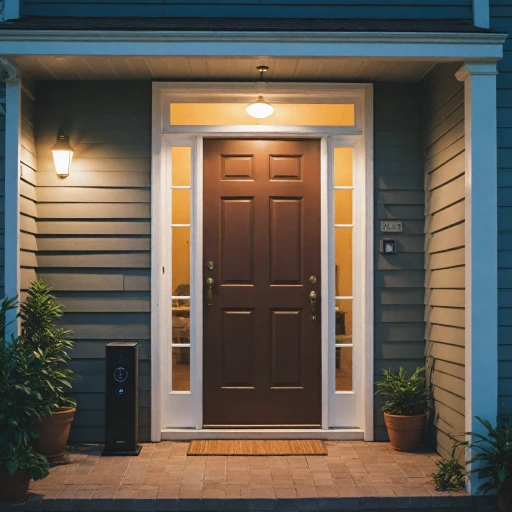
Understanding Cable Types for CCTV Cameras
The Variety of Cables for Your Security Setup
Choosing the right cable for your CCTV security camera system is crucial for optimal performance. Understanding different cable types is a fundamental step. Each type offers unique benefits, suitable for varied security camera setups. It’s essential to identify which cable aligns with your camera system to ensure high-quality video transmission and long-term efficiency. Coaxial CablesCoax cables, often seen in analog CCTV systems, are known for their reliability in transmitting video signals over longer distances without significant quality loss. Using a cable BNC connector, these are typically paired with analog systems. Coax cables like the siamese cable are advantageous as they combine video and power cables, simplifying installation and reducing the need for additional wiring. Ethernet Cables
For IP security cameras, Ethernet cables such as Cat 5e or Cat 6 are more common. A key advantage is their ability to transmit video, audio, and power through one cable using Power over Ethernet (PoE) technology. This simplifies installation and decreases the clutter associated with multiple cables. These cables are suitable for both indoor and outdoor setups, given their robustness and fast data transfer abilities. Power Cables
Dedicated power cables are used in camera systems to supply electricity to non-PoE cameras. Ensuring a reliable power source is crucial for your camera's operation. When selecting a power cable, consider the quality and length to maintain consistent power delivery. Exploring the benefits of a wired backup camera can offer insights into integrating these systems effectively. By understanding the types of cables and their respective uses, you can enhance your security system's reliability and functionality. Further exploration into how these cables fit with your Ring camera setup and ensure compatibility will be addressed in subsequent sections.
Compatibility with Ring Cameras
Ensuring Compatibility with Ring Cameras
When setting up your security system, ensuring that your cables are compatible with Ring cameras is crucial. Ring cameras, like many modern security cameras, have specific requirements that need to be met for optimal performance. Understanding these requirements can save you time and frustration during installation.
Firstly, it's important to know the type of camera you have. Ring cameras typically use Wi-Fi for connectivity, but if you're integrating them into a more extensive CCTV system, you might need to consider the type of cables used for power and video transmission. While traditional analog CCTV systems often use coax cables with BNC connectors, Ring cameras may require different setups.
For power, Ring cameras often rely on power cables that can be integrated into existing wiring systems. If you're using a wireless setup, you might not need extensive cabling, but ensuring that your power source is reliable is still essential.
When it comes to video transmission, if you're incorporating Ring cameras into a wired system, consider using Ethernet cables. These cables, such as Cat 5 or Cat 6, can handle both power and data, making them a versatile choice for modern security camera systems. However, always check the specifications of your Ring camera to ensure compatibility.
Lastly, consider the connectors. While BNC connectors are common in analog CCTV setups, Ring cameras might require different types of connectors, depending on the model. Always verify the connector type before purchasing cables to avoid any mismatches.
In summary, understanding the compatibility of your cables with Ring cameras involves considering the type of camera, the power requirements, the video transmission method, and the connectors. This knowledge will help you choose the right cables and ensure a seamless integration into your security system.
Cable Length and Signal Quality
Ensuring Signal Quality through Optimal Cable Length
Choosing the right cable length is a critical aspect of maintaining the signal quality for your security camera system. Whether you're using siamese cables, coax cable, or newer options like CAT ethernet cables, signal degradation can be a concern when wires are too long. One of the factors you should consider is the distance between your CCTV camera and the main system. Analog CCTV systems, for example, can face significant signal loss if the camera cables stretch beyond certain lengths. To combat this, many camera systems recommend keeping BNC and power cables under 300 feet. Overextending the camera wiring might lead to diminished video quality. On the other hand, when you're utilizing ethernet cables, you can often stretch further. With CAT cables, long distances are usually more manageable due to their construction. Keep in mind, though, that the environment matters. Ensure you're using proper shielded cables to prevent interference, especially if you're running wiring through areas with a lot of electronic equipment. For those customized systems, consider the SKU you purchase, as some may come with pre-terminated cables specifically cut for different setups. It's essential to follow best practices during the installation to safeguard your camera system's performance over time. For additional information on maximizing your security camera installation, learn more about the benefits of various camera systems that can complement your setup effectively.Weatherproofing and Durability
Ensuring Durability in Every Climate
When setting up your CCTV security system, one of the most crucial aspects to consider is the weatherproofing and durability of your camera cables. The quality of the materials used in the cables determines how well they withstand environmental factors such as rain, snow, and extreme temperatures. Selecting weather-resistant cables is essential for maintaining a stable security camera system.
If your security cameras will be installed outdoors, it’s vital to ensure that the camera cables are weatherproof to avoid potential damage from the elements. Look for cables with protective jackets that can resist UV rays, moisture, and physical abrasions. This is especially important for siamese cables, which combine the video and power cables in one casing, making them versatile but more susceptible to environmental wear and tear.
Choosing the Right Material
The choice of material also plays a significant role in the durability of cables. For instance, coaxial cables used in analog CCTV systems should have a protective outer layer that guards against corrosion. In contrast, CAT or ethernet cables used with digital systems need to ensure maximum flexibility and strength, often protected with additional coatings for longevity.
Furthermore, connectors such as BNC connectors should be made of high-quality materials to prevent signal degradation and ensure reliable connectivity. The combination of durable cable and connector materials contributes significantly to the overall effectiveness of your video systems.
Regular Maintenance and Checks
Regular inspection and maintenance are vital to prolong the lifespan of your camera cables. Ensure to periodically check the cable wiring for any signs of wear and tear. This helps in identifying early problems and addressing them before they lead to more significant issues within your security camera system.
Understanding the requirements and capabilities of different cable types, alongside weatherproofing needs, will enhance the reliability and quality of your camera system installations. Proper planning for cable durability not only protects your investment but ensures that your security cameras deliver optimal performance regardless of the conditions.
Installation Tips and Best Practices
Installing Security Camera Wiring Efficiently
Effective installation of your security camera cables plays a vital role in getting the most out of your CCTV system. A few best practices can make all the difference:- Plan Your Wiring Path: Determine the most efficient route for your camera wiring. Whether utilizing coax or ethernet cables, keeping the path straightforward minimizes potential interference with video quality and maintains signal strength.
- Secure Your Connections: Properly securing camera connectors, particularly BNC and power connectors, ensures a reliable connection. Loose connectors can degrade video and audio quality, compromising the effectiveness of your security system.
- Consider the Cable Type: When using siamese cables for analog CCTV systems, remember they combine power and video, simplifying installation. If your setup requires ethernet cables, ensure they are compatible with your cameras, especially for IP systems.
- Label Your Cables: With multiple cameras, labeling analog or IP camera cables keeps your system organized, aiding in maintenance and troubleshooting.
- Avoid Interference: Keep power cables away from potential sources of signal interference, such as electrical wiring, to maintain video quality.
- Conceal Wiring: For added security and aethetic value, use conduits or hide wiring within walls where possible. This approach deters tampering and enhances protection for cables from environmental factors.
- Use Quality Materials: Invest in high-quality cables and connectors to ensure long-lasting performance. This is especially crucial in weather-exposed installations where durability is key.
Troubleshooting Common Cable Issues
Identifying Common Cable Issues
When it comes to maintaining your CCTV security camera system, understanding potential cable issues is crucial. Here are some common problems you might encounter with camera cables and how to address them:
- Signal Loss: If your video feed is experiencing interruptions or poor quality, it might be due to signal loss. This can happen if the cable length exceeds the recommended distance for your cable type. Consider using a signal booster or switching to a higher-quality cable like a coax cable or ethernet cable.
- Loose Connections: Check all connectors, including BNC and power connectors, to ensure they are securely attached. Loose connections can lead to intermittent video or power loss.
- Power Issues: If your camera isn't receiving power, inspect the power cable for any damage or wear. Ensure that the power source is functioning correctly and that the power cable is compatible with your camera system.
- Interference: Analog CCTV systems can suffer from interference due to nearby electronic devices. Keep your camera wiring away from other electrical cables and consider using shielded cables to minimize interference.
- Weather Damage: For outdoor installations, ensure that your cables are weatherproofed. Exposure to the elements can degrade cable quality over time, affecting both video and power transmission.
Steps to Resolve Cable Problems
Once you've identified the issue, follow these steps to resolve it:
- Inspect and Replace: Regularly inspect your cables for any signs of wear or damage. Replace any damaged cables with high-quality options like siamese cables for combined video and power transmission.
- Secure Connections: Ensure all connectors are tightly secured. Use cable ties to manage and secure camera cables, preventing them from becoming loose over time.
- Upgrade Cables: If you're using older cable types, consider upgrading to newer, more efficient options like ethernet cables for better signal quality and reliability.
- Consult a Professional: If troubleshooting doesn't resolve the issue, it might be time to consult a professional. They can provide expert advice on camera systems and help optimize your setup for better performance.
